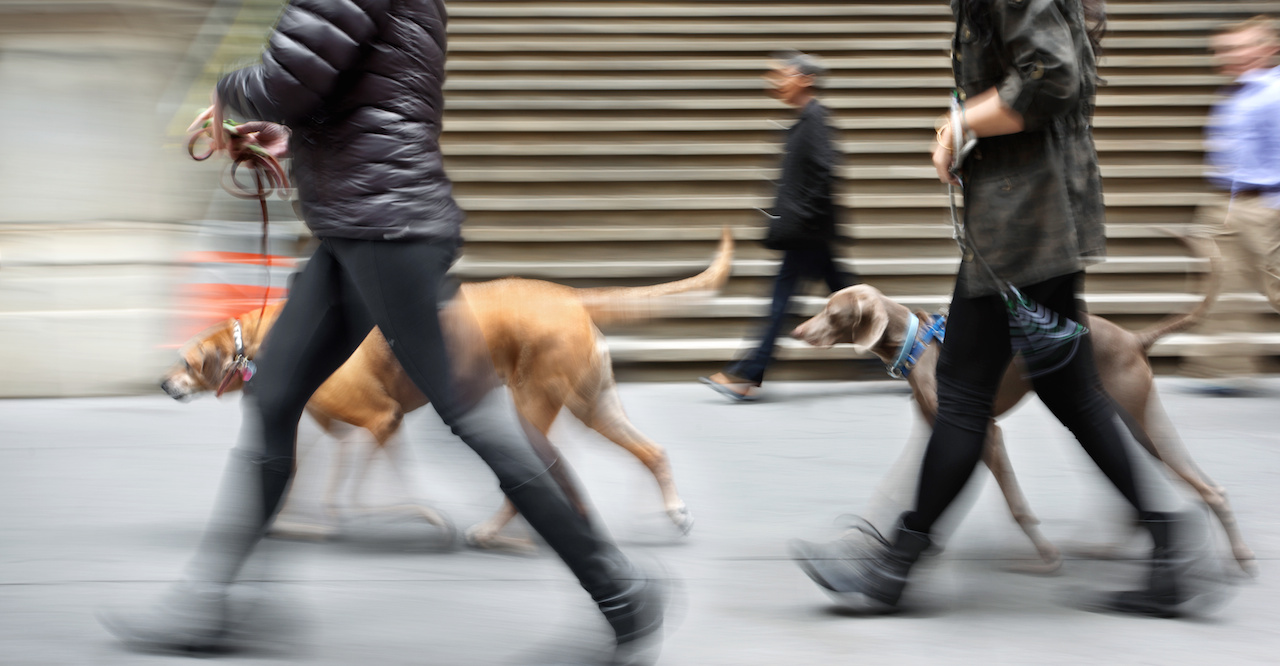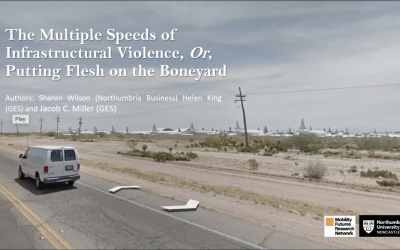Catherine Smith, visiting reasearcher at Cemore this summer, writes about how she has used mobile methods to research dog walking practices and physiotherapy.
Movement and physiotherapy research are inextricably linked; however, until dog-walking serendipitously ‘emerged’ as a positive influence on human health and wellbeing, I was unaware of the ‘Mobilities’ approach. Dog-walking just kept coming up in other projects that focused on identifying enjoyable and sustainable exercise for people with long-term health conditions.
My recent visit to CeMoRe in August completed a circle that began in 2013 with a casual email from a colleague that read “why don’t you use mobile methods to collect your dog-walking data”? This event triggered a challenging and ultimately rewarding research journey involving capture and analysis of data from dog-walk-along interviews with ‘healthy’ adults and adults with a chronic health conditions.
As a predominantly qualitative researcher, I had considered myself reasonably proficient capturing and analyzing data from seated (distant from others) interview-based studies. Researching the question “how does dog-walking contribute to perceived human health and wellbeing in people with long-term health conditions”? I used dog-walk-along interviews (present with others) and participatory analysis sessions to move analysis beyond identification of patterns and themes, and into the realm of a conceptual model that reflected movement between relational therapeutic ‘spaces’.
Analyzing data from 12 dog-walk-along interviews (with 12 different participants) and 15 participatory analysis sessions, we identified four themes (shared experiences across participants). The themes reflected a special relationship’ between a human with a chronic health condition and a dog. People described how motivation to get outdoors and or exercise was particularly difficult and that part of the Special Relationship provided extra motivation or “Obligation of love” to overcome these difficulties and take the dog for a walk. Cognitive and psychological (invisible) symptoms contributed to greater feelings of isolation and walking the dog was a way of reconnecting with other humans in an often very gentle and undemanding way. The last theme detailed how the dog-walking experience included many positive sensory and affective ‘Ingredients’ such as pleasant sights, sounds and smells. In the second stage of our analysis we re-framed these themes into a series of embodied and environmental spaces where perceived wellbeing flourished or declined. The key to positive wellbeing appeared to be the permeability of borders between these spaces and in our future work we would like to focus in upon the factors that alter this permeability. These factors might range from local dog-policy control bylaws to stigma associated with illness symptoms.
Movement underpins what it is to be a physiotherapist and this research journey into dog-walking mobilities has forever changed the way I evaluate and promote movement-based interventions.
Through both distant (book and article publications) and present (visit in July 2016) engagement and interaction with colleagues at CeMoRe, I have been challenged to think outside of familiar research and practice spaces. Movement underpins what it is to be a physiotherapist and this research journey into dog-walking mobilities has forever changed the way I evaluate and promote movement-based interventions. Using a series of interlinked embodied and environmental spaces, we can better identify links between movement and wellbeing and in doing so identify more useful ways to promote movement-based activities (dog-walking being just one) for people with long-term health conditions.
Cath Smith is a lecturer at the School of Physiotherapy Otago University, New Zealand.
Main photo: mauidogremedies.com




